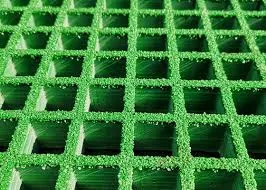
-
 Afrikaans
Afrikaans -
 Albanian
Albanian -
 Amharic
Amharic -
 Arabic
Arabic -
 Armenian
Armenian -
 Azerbaijani
Azerbaijani -
 Basque
Basque -
 Belarusian
Belarusian -
 Bengali
Bengali -
 Bosnian
Bosnian -
 Bulgarian
Bulgarian -
 Catalan
Catalan -
 Cebuano
Cebuano -
 China
China -
 China (Taiwan)
China (Taiwan) -
 Corsican
Corsican -
 Croatian
Croatian -
 Czech
Czech -
 Danish
Danish -
 Dutch
Dutch -
 English
English -
 Esperanto
Esperanto -
 Estonian
Estonian -
 Finnish
Finnish -
 French
French -
 Frisian
Frisian -
 Galician
Galician -
 Georgian
Georgian -
 German
German -
 Greek
Greek -
 Gujarati
Gujarati -
 Haitian Creole
Haitian Creole -
 hausa
hausa -
 hawaiian
hawaiian -
 Hebrew
Hebrew -
 Hindi
Hindi -
 Miao
Miao -
 Hungarian
Hungarian -
 Icelandic
Icelandic -
 igbo
igbo -
 Indonesian
Indonesian -
 irish
irish -
 Italian
Italian -
 Japanese
Japanese -
 Javanese
Javanese -
 Kannada
Kannada -
 kazakh
kazakh -
 Khmer
Khmer -
 Rwandese
Rwandese -
 Korean
Korean -
 Kurdish
Kurdish -
 Kyrgyz
Kyrgyz -
 Lao
Lao -
 Latin
Latin -
 Latvian
Latvian -
 Lithuanian
Lithuanian -
 Luxembourgish
Luxembourgish -
 Macedonian
Macedonian -
 Malgashi
Malgashi -
 Malay
Malay -
 Malayalam
Malayalam -
 Maltese
Maltese -
 Maori
Maori -
 Marathi
Marathi -
 Mongolian
Mongolian -
 Myanmar
Myanmar -
 Nepali
Nepali -
 Norwegian
Norwegian -
 Norwegian
Norwegian -
 Occitan
Occitan -
 Pashto
Pashto -
 Persian
Persian -
 Polish
Polish -
 Portuguese
Portuguese -
 Punjabi
Punjabi -
 Romanian
Romanian -
 Russian
Russian -
 Samoan
Samoan -
 Scottish Gaelic
Scottish Gaelic -
 Serbian
Serbian -
 Sesotho
Sesotho -
 Shona
Shona -
 Sindhi
Sindhi -
 Sinhala
Sinhala -
 Slovak
Slovak -
 Slovenian
Slovenian -
 Somali
Somali -
 Spanish
Spanish -
 Sundanese
Sundanese -
 Swahili
Swahili -
 Swedish
Swedish -
 Tagalog
Tagalog -
 Tajik
Tajik -
 Tamil
Tamil -
 Tatar
Tatar -
 Telugu
Telugu -
 Thai
Thai -
 Turkish
Turkish -
 Turkmen
Turkmen -
 Ukrainian
Ukrainian -
 Urdu
Urdu -
 Uighur
Uighur -
 Uzbek
Uzbek -
 Vietnamese
Vietnamese -
 Welsh
Welsh -
 Bantu
Bantu -
 Yiddish
Yiddish -
 Yoruba
Yoruba -
 Zulu
Zulu
Exploring the Features and Benefits of GRP Tanks for Water Storage
The GRP Tank A Modern Solution for Various Industries
In recent years, the versatility and efficiency of Glass Reinforced Plastic (GRP) tanks have positioned them as a preferred choice in numerous industries. These tanks, constructed using advanced fiberglass materials, offer a myriad of advantages that make them increasingly popular for both storage and transport applications.
One of the most significant benefits of GRP tanks lies in their durability. Unlike traditional storage solutions made of steel or concrete, GRP tanks are resistant to rust, corrosion, and weather-related wear and tear. This unique property is pivotal for industries that handle aggressive chemicals or operate in harsh environments. For instance, the chemical manufacturing sector frequently utilizes GRP tanks for storing corrosive substances, ensuring that these materials remain contained without risking structural failure.
.
Another noteworthy advantage is the customization potential of GRP tanks. They can be molded into various shapes and sizes to meet specific requirements, whether for residential rainwater harvesting systems or large-scale industrial storage facilities. This flexibility allows businesses to optimize space usage and design their storage solutions according to operational needs.
grp tank

Furthermore, GRP tanks are designed to provide excellent thermal insulation. This feature is particularly advantageous in applications where temperature control is a priority, as it helps maintain the integrity of stored liquids and gases. For instance, in the food and beverage industry, maintaining consistent temperatures is crucial for product quality and safety. GRP tanks can help companies meet these stringent requirements effectively.
The environmental impact of GRP tanks is also an important consideration in today's eco-conscious society. They can be manufactured with minimal waste and are often made from recyclable materials. Additionally, the longevity of GRP tank construction reduces the need for frequent replacements, lowering the carbon footprint associated with manufacturing and disposal. As more industries seek sustainable solutions, GRP tanks present an appealing option that aligns with green practices.
Maintenance is another area where GRP tanks excel. Their non-porous surfaces reduce the accumulation of debris and biofilm, making cleaning and maintenance simpler and less costly over time. This ease of maintenance contributes further to their appeal in sectors such as water treatment and storage, where compliance with health and safety regulations is paramount.
Finally, as technology continues to evolve, the manufacturing processes for GRP tanks have improved significantly, allowing for more efficient production methods that enhance their reliability and quality. This progress means that industries can invest in GRP solutions with confidence, knowing they are employing a technology that is continually advancing.
In conclusion, the adoption of GRP tanks across various sectors signifies a shift towards more durable, cost-effective, and environmentally friendly solutions. With their impressive array of benefits, including durability, lightweight design, thermal insulation, and reduced maintenance, GRP tanks are poised to become a standard in industries ranging from agriculture to chemical processing. As the world increasingly focuses on sustainability and efficiency, GRP tanks are leading the way into a new era of storage technology.









